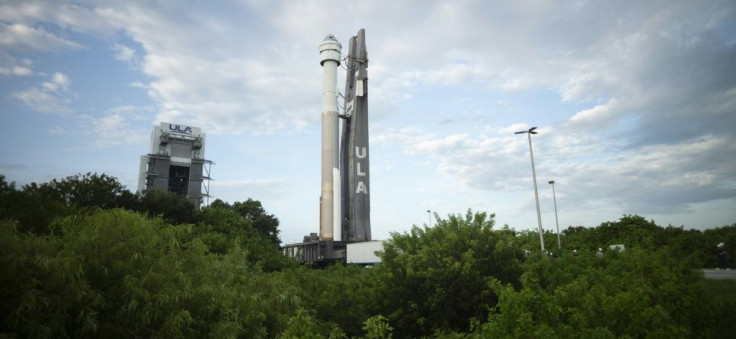Fuel Leak At Launchpad Delays Space Force's STP 3 Mission; New Launch Date Revealed
KEY POINTS
- There was a fuel leak at the launchpad's ground storage system
- The STP 3 was supposed to be the final ULA mission for 2021
- The launch has been rescheduled for Tuesday
A fuel leak at the launchpad has caused a delay in a planned rocket launch for the United States Space Force (USSF).
The rocket was initially scheduled to launch at 4.04 a.m. from launchpad 41 at Cape Canaveral Space Force Station in Florida on Sunday. However, the Space Test Program (STP) 3, which was supposed to be the final United Launch Alliance (ULA) mission for 2021, was scrubbed due to a fuel leak, NASASpaceflight reported.
"The launch of a ULA #AtlasV 551 rocket carrying the #STP3 mission for the @SpaceForceDOD @USSF_SSC has been scrubbed," ULA said in a brief statement on Twitter. "During initial operations, a leak was discovered in the Rocket-Propellant-1 (RP-1) ground storage system."
The launch of a ULA #AtlasV 551 rocket carrying the #STP3 mission for the @SpaceForceDOD @USSF_SSC has been scrubbed. During initial operations, a leak was discovered in the Rocket-Propellant-1 (RP-1) ground storage system. Launch is now scheduled for Mon., Dec. 6 at 4:04am EST.
— ULA (@ulalaunch) December 5, 2021
The delay was first announced at 7 p.m. EST Saturday "just before" the beginning of the countdown for the liftoff, according to Spaceflight Now. Although the initial announcement of the delay said the launch was rescheduled for Monday – also at 4.04 a.m. EST, a follow-up tweet noted that it was rescheduled to 4.04 a.m. EST Tuesday.
Launch is now scheduled for Tues., Dec. 7 at 4:04amEST. https://t.co/LEV7vitjDL
— ULA (@ulalaunch) December 5, 2021
Launch for the U.S. Space Force
The launch is set to deliver the STP 3 mission for the USSF's Space Systems Command.
"STP-3 is a co-manifested mission that matures technology and reduces future space program risk for the Department of the Air Force and the U.S. Space Force by advancing warfighting capabilities in the areas of nuclear detonation detection, space domain awareness (SDA), weather, and communication," the ULA website noted. "Both spacecraft will be delivered to geosynchronous orbit."
Its primary spacecraft is the STP Satellite (STPSat-6), while the rideshare spacecraft is the Long Duration Propulsive Evolved Expendable Launch Vehicle (EELV) Secondary Payload Adapter (ESPA) (LDPE)-1. Both were built by Northrop Grumman.
STPSat-6 will host nine experiments, including ones for NASA and the National Nuclear Security Administration, NASA Spaceflight reported. The LDPE-1 will also carry several payloads although their exact nature is "currently unknown."
"The experiments are intended for rapid risk reduction efforts to inform future programs," ULA noted.

© Copyright IBTimes 2024. All rights reserved.





















